What's New
Displaying results 1361 - 1370 of 4052
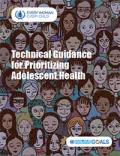
Resource | Publications,
Adolescent health has become a priority on the global agenda. The Every Woman Every Child Global Strategy for Women's, Children's, and Adolescents' Health (2016-2030), launched at the Sustainable Development Summit in September 2015, has added a focus on adolescents, in view of the uneven progress thus far in addressing their rights and needs. As part of the Every Woman Every Child movement, many governments have made political commitments to prioritize adolescent health together with their overall efforts in improving reproductive, maternal, newborn, child health.
Given this context, this document can guide country stakeholders in conducting a systematic situation assessment that will enable them to prioritize adolescent health within their national policy processes. The goal is to ensure future investments are guided by available data on adolescents, and importantly, maximally-used to support evidence-informed health interventions that can be brought to scale in order to reach and fulfill the rights of adolescents, especially those left behind.
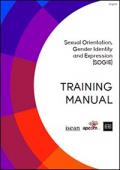
Resource | Tools,
As a network that focuses on male and transgender sexual health issues, one of ISEAN vision is to make societies within ISEAN are more accepting of sexual orientation and gender identity within the context human rights. ISEAN realizes that disseminating comprehensive information about sexual orientation and gender identity and expression (SOGIE) to our community is the most important and urgent thing that must be done prior to implementing the next program.
The SOGIE Training Manual can be used as a guide in organizing capacity building on the basic knowledge of SOGIE. This manual consists of five modules that discuss the terms related to gender and sexuality; introduction to gender and sexuality; the process of identity formation and its challenges; stigma and discrimination, including homophobia and transphobia; and psychological issues related to gender and sexuality.
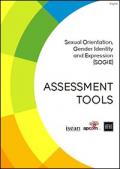
Resource | Tools,
ISEAN has developed sexual orientation and gender identity and expression (SOGIE) package that can be applied by organizations that focus on the issue of sexuality and sexual health as well as by other organizations that consider this issue is important to be institutionalized in their organizations.
The first document of this SOGIE Package is the SOGIE Assessment Tool that is used to measure the sensitivity level of an organization and its personnel to the issue of SOGIE. This tool can be used as a database for organizations that want to mainstream SOGIE issue in organization’s activities.
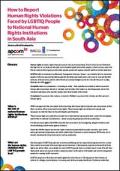
Resource | Publications,
Like all people, if LGBTIQ people are to achieve wellbeing and be respected and given worth in society they need to be assured of human rights and protections. Unfortunately, experience shows that these rights are, all too often, unavailable for many LGBTIQ people due to criminal laws in most of South Asia that punish same-sex sexual conduct, and give powers to the police to threaten and arrest transgender people for causing 'public nuisance'. LGBTIQ people are often discriminated against for who they are. This happens in their homes, at schools or colleges, at workplaces, in housing, and while accessing healthcare.
National human rights institutions (NHRIs) can be approached by the victimised LGBTIQ people (or through their representatives) who seek to complain about rights violations that they have experienced. It is the duty of NHRIs to consider these complaints and respond to them by inquiring into their accuracy and substance, and investigating the violations that have been brought to their notice.
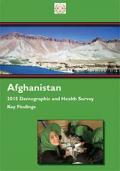
Resource | Publications,
The 2015 Afghanistan Demographic and Health Survey (AfDHS) is designed to provide data for monitoring the population and health situation in Afghanistan. The 2015 AfDHS is the first Demographic and Health Survey conducted in Afghanistan in collaboration with The Demographic and Health Surveys Program. The objective of the survey was to provide reliable estimates of fertility levels, marriage, fertility preferences, awareness and use of family planning methods, breastfeeding practices, nutrition, maternal and child health and mortality, awareness and behavior regarding HIV/AIDS and other sexually transmitted infections (STIs), and other health-related issues such as smoking, tuberculosis, and cancer that can be used by program managers and policymakers to evaluate and improve existing programs.
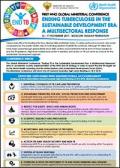
Resource | Fact Sheets,
Tuberculosis (TB) is the leading infectious disease killer worldwide today. It carries profound economic and social consequences. The public health crisis of multi-drug resistant TB (MDR-TB) continues. Although 49 million lives have been saved through global efforts since 2000, actions and investments fall far short of those needed to end the TB epidemic. High-level multisectoral action is needed, and action on TB can serve as a tracer for the Sustainable Development Agenda.

Resource | Presentations,
The WHO Global Ministerial Conference “Ending TB in the Sustainable Development Era: A Multisectoral Response” aims to accelerate country implementation of the WHO End TB Strategy in order to reach the End TB targets set by the World Health Assembly and the United Nations (UN) Sustainable Development Goals (SDGs). The Ministerial Conference will inform the UN General Assembly High-Level Meeting on TB in 2018.

Resource | Publications,
The World Health Organization (WHO) convened a technical consultation during 1–2 December 2016 to review new evidence on the risk of HIV acquisition with the use of hormonal contraception (1). The issue was recognized as a critical one, particularly for sub-Saharan Africa, where women have a high lifetime risk of acquiring HIV, hormonal contraceptives constitute a significant component of the contraceptive method mix and unintended pregnancy is a common threat to the well-being and lives of women and girls.
Through consensus, the GDG arrived at new recommendations for progestogen-only injectables. The recommendations for use of progestogen-only injectables among women at high risk of HIV changed from category 1 to category 2, with an accompanying clarification, in the Medical eligibility criteria for contraceptive use (MEC) (1). Recommendations for all other methods of hormonal contraception remained unchanged.
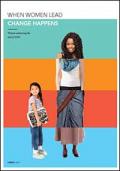
Resource | Publications,
When women lead, change happens. Results follow.
The AIDS response has been led by women. When there was no treatment available, women were at the forefront of providing care for people living with and affected by HIV. Grandmothers looked after orphans. Elder sisters looked after their younger siblings. Women fought for access to treatment and mobilized.
Today, we are at the cusp of eliminating new HIV infections among children—a movement led by women. More women are accessing antiretroviral therapy than men, transferring the benefits of their good health to their families and economies. When young women are empowered and have their rights fulfilled, HIV prevalence falls, there are fewer unintended pregnancies, fewer maternal deaths and fewer dropouts from school and more women join the workforce. When young women have access to education, health outcomes dramatically improve.
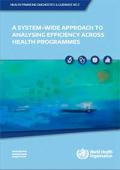
Resource | Publications,
Health programmes are able to target health interventions for specific diseases or populations, and historically, countries have relied heavily on them to deliver priority services. In low and middle income countries, this organizational approach has been reinforced by donor assistance for priority areas that often leads programmes to operate largely autonomously from one another in seeking to optimize the achievement of a specific objective. This dynamic has implications for how priority interventions are delivered and sustained, sometimes with separate organizational arrangements resulting in inefficient overlaps and duplications. As contexts change, and in particular, as responsibility for funding these programmes shifts more towards domestic resources, maintaining an array of programmes with distinct, separate organizational arrangements is unlikely to be affordable.
This paper presents an approach to conceptualizing and addressing inefficiencies arising from the way that health programmes operate within the context of the overall health system.





